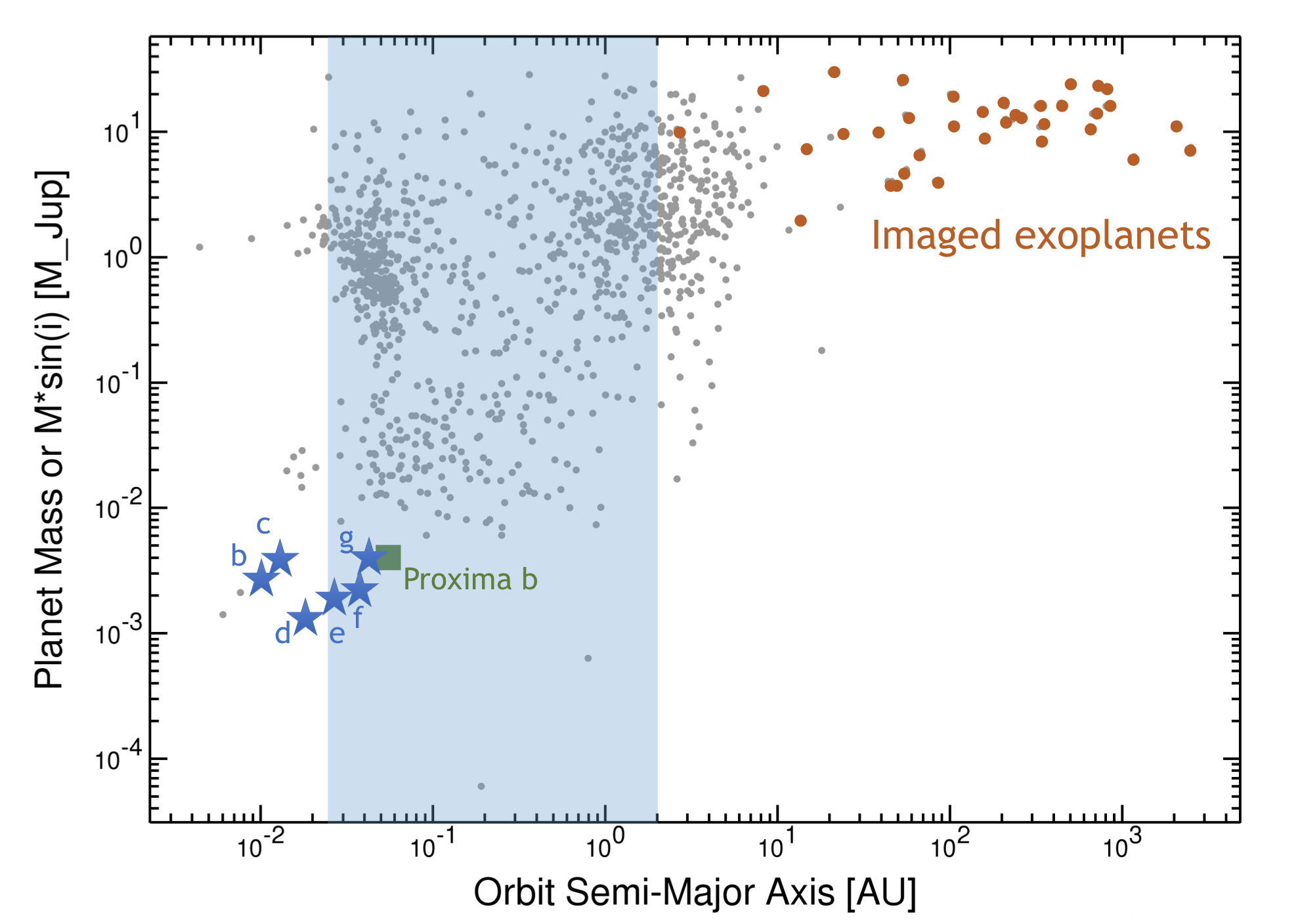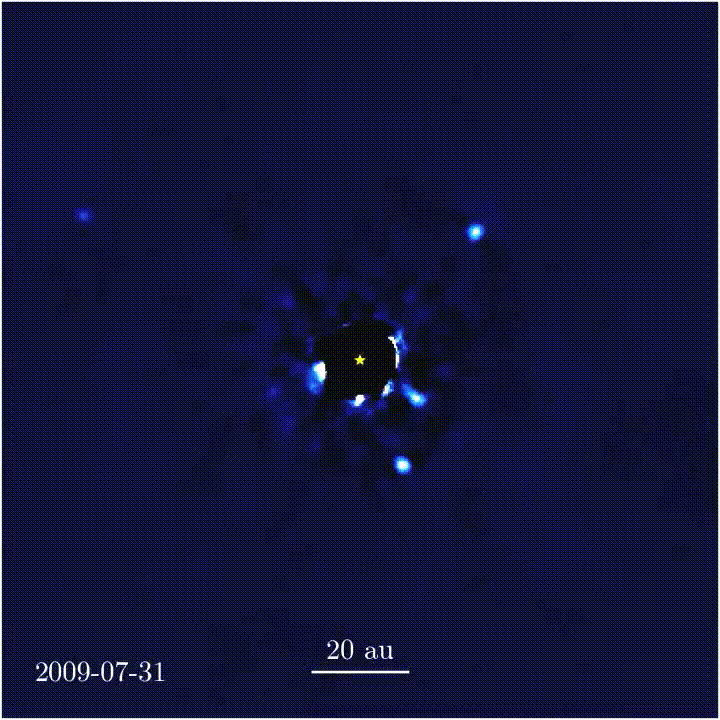Exoplanet imaging


Nearly 3600 confirmed exoplanets are known to date and the latest results from the Kepler Space Telescope suggest that rocky exoplanets are ubiquitous (Winn & Fabrycky 2015). In particular, a potentially habitable planet was recently discovered around our nearest neighbouring star (Proxima Cen, Anglada-Escude et al. 2016) and seven earth-sized planets were discovered around the low-mass star TRAPPIST-1 (Gillon et al. 2017), all with equilibrium temperatures low enough to make possible the presence of liquid water on their surfaces (Bourrier et al. 2017). These outstanding discoveries open the road to a new exciting era in exoplanet science: the characterisation of low-mass exoplanets and the tantalising possibility of detecting evidence of life on one of them.
To search for life on exoplanets, a mandatory pre-requisite is obtaining high-quality spectra by remote sensing (Seager & Bains 2015). While very rewarding scientifically, detecting the photons from a planet is also very challenging due to the high contrast between a planet and its host star. For the nearest stars, two complementary techniques are generally used to achieve this goal. The first method is transit spectroscopy, where the spectral footprint of the planetary atmosphere is measured either by using observations obtained during the primary eclipse (transmission spectroscopy) or by using observations obtained before and during the secondary eclipse (secondary eclipse spectroscopy). Using this technique with the Hubble Space Telescope, atmospheric features were detected for the first time in the spectrum of a temperate rocky exoplanet (de Wit et al. 2016). Soon, new space instruments like the Transiting Exoplanet Survey Satellite (TESS) or the James Webb Space Telescope (JWST) will significantly push our characterization capabilities (Greene et al. 2016) but these transit observations will be limited to a few favourable cases (mostly exoplanets around M stars). To access planets at a wider range of separations, the second technique is direct imaging, where the planetary photons are angularly resolved from those of the host star. This is a very challenging task and, so far, only about 45 planets or low-mass brown dwarfs have been directly observed (Bowler 2016, see Figure 1). These imaged planets are all large and gaseous bodies, generally more massive than Jupiter, located well beyond the habitable zone (HZ) of their host star. Rocky planets and/or giant temperate planets orbiting in the HZ remain out of reach of current instrumentation due to their weak emission and relative proximity to their host star. To directly image giant exoplanets and characterize their atmospheres, I used the most advanced optical/infrared telescopes around the world (e.g., Bonnefoy et al. 2014, Skemer et al. 2014, Ortiz et al. 2016, Mawet et al. 2017). I also work on innovative projects to search for biosignatures on Earth-like exoplanets (e.g., Defrère et al. 2010).
For more information about my research:
- Mawet et al., "Deep Exploration of epsilon Eridani with Keck Ms-band Vortex Coronagraphy and Radial Velocities: Mass and Orbital Parameters of the Giant Exoplanet", AJ 157, 33, 2019.
- Borgniet et al., "Constraints on HD 113337 fundamental parameters and planetary system. Combining long-base visible interferometry, disc imaging, and high-contrast imaging", A&A 627, A44, 2019.
- Stone et al., " The LEECH Exoplanet Imaging Survey: Limits on Planet Occurrence Rates under Conservative Assumptions", AJ 156, 286, 2018.
- Skemer et al., "The LEECH Exoplanet Imaging Survey: Characterization of the Coldest Directly Imaged Exoplanet, GJ 504 b, and Evidence for Superstellar Metallicity", ApJ 817, 2, 2016.
- Bonnefoy et al., "Characterization of the gaseous companion κ Andromedae b. New Keck and LBTI high-contrast observations", A&A 562, A111, 2014.
- Defrère et al., "L'-band AGPM vector vortex coronagraph's first light on LBTI/LMIRCam", SPIE 91483X, 2014.
- Skemer et al., "Directly Imaged L-T Transition Exoplanets in the Mid-infrared", ApJ 792, 1, 2014.
- Defrère et al., "Nulling interferometry: impact of exozodiacal clouds on the performance of future life-finding space missions", A&A 509, A10, 2010.